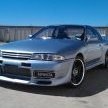The Great Dyno E-Doodle debate
Announcements
-
Similar Content
-
Latest Posts
-
Hi, I need same this wing nismo , Does anyone have one for sale? if any one have can contact me 00966546888343
-
Nah, lots of insurance repairs on V36 and V37 for pedestrians deployments. Reasons ranging from possums, to extremely severe potholes have deployed them. However, paying for the full repair can still be upto $5k AU some people have noted!
-
Hi, i got 1998 r34 4 door auto abs model and its manual converted with bigbox when i bought it . I successfully find the neutral and reverse light wire but can’t find the speed signal wires for speedo drive. I know its grey plug but on my loom no grey plug with 2 wires . I opened the loom upto where it getting branch with other wire, i’m amazed they is no wire. So need help how to fix the speedometer problem. I search on google it says some r34 model measure speed from diff sensor. Is it right? I talk to a wrecker he say no this isn’t right, i’m kinda stuck. Please help
-
What!? US law does not apply to the rest of the world!!!
-
No requirement for JDM vehicles, which the 33 is, maroney label only needed in the US market for new cars I believe (Federal law stuff) Google knows all
-







Recommended Posts